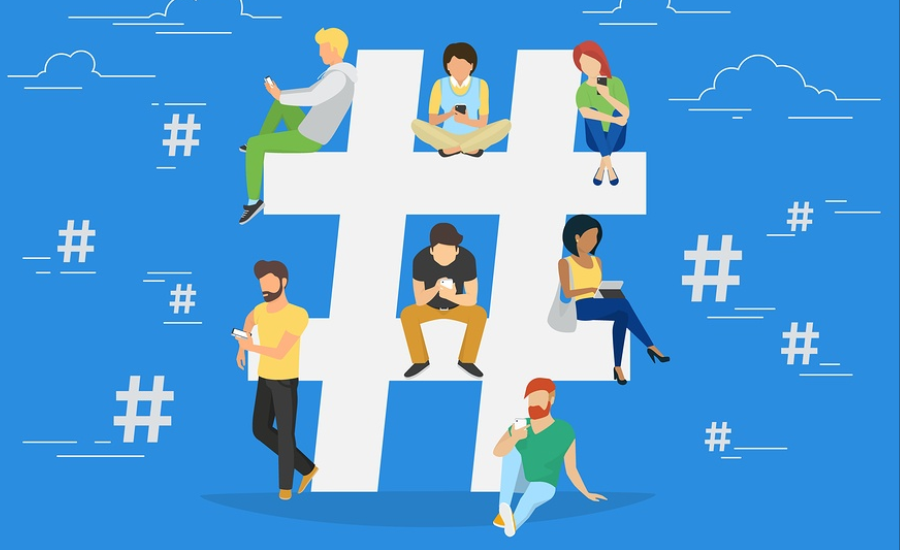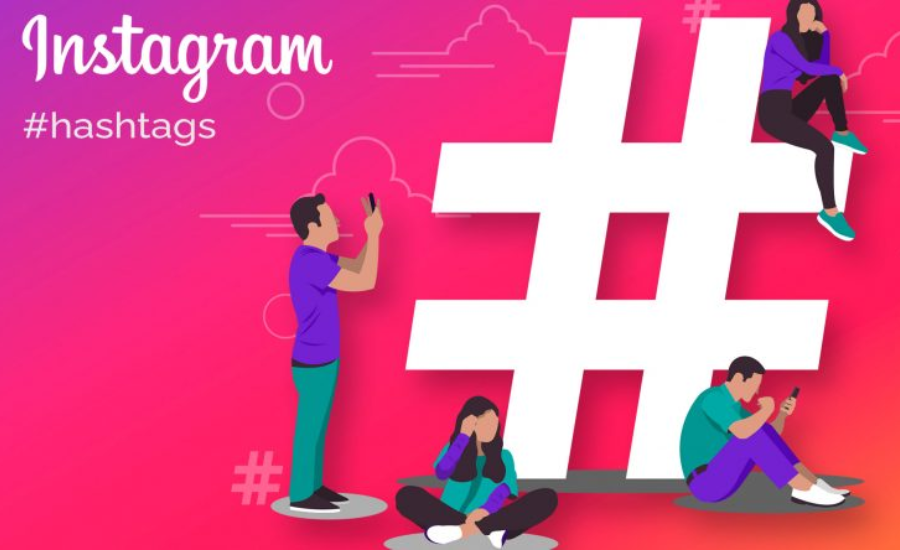In the dynamic landscape of social media, navigating various terms and strategies can often feel overwhelming. One such tool, now integral to the digital experience, is the hashtag. This comprehensive guide aims to explain everything about hashtags—from what they are, their origin, to their practical uses—empowering you to use them effectively in your social media strategy.
What Is A Hashtag?

A hashtag is a word or phrase prefixed by the pound symbol (#) used to group posts under a specific theme or topic. Essentially, it acts as a keyword that helps categorize social media content, making it easier for users to discover posts on a particular subject. For instance, you might see #Technology or #Travel to find discussions or posts related to these topics.
Examples Of Popular Hashtags
- #Foodie: Used by those sharing food experiences or recipes.
- #TravelGoals: To showcase travel adventures or aspirational destinations.
- #TechNews: Sharing the latest updates in technology.
The Origin Of Hashtags

The concept of the hashtag was first introduced in 2007 by Chris Messina, a product designer and social media enthusiast. He proposed using the pound sign on Twitter to group conversations and make tweets more discoverable. This simple idea quickly gained momentum and has since expanded beyond Twitter, making its way to Instagram, Facebook, LinkedIn, and other platforms.
Key Milestones In Hashtag History
- 2007: Chris Messina introduces the hashtag on Twitter.
- 2011: Instagram adopts hashtags to help users categorize their posts.
- 2013: Facebook integrates hashtags, enabling cross-platform use.
How Hashtags Work?

Hashtags function by turning a word or phrase into a searchable link. When someone clicks on or searches for a hashtag, they are taken to a feed that shows all the posts using that particular tag. This feature allows users to engage in ongoing conversations, explore new content, and connect with others sharing similar interests.
How They Operate:
- Tagging: Users include hashtags in their posts to categorize the content.
- Searching: By searching for a hashtag, users can find posts related to a specific topic.
- Discovery: Hashtags help group posts on the same topic, enabling users to discover new content easily.
Uses Of Hashtags Across Social Media
Hashtags serve multiple purposes and can be used for more than just categorization. Here are some of their key applications:
- Content Categorization: By tagging posts with specific hashtags, users make it easier for others to find related content. For example, #Fitness might group posts about workout routines, diets, and more.
- Tracking Trends: Hashtags allow users to follow trending topics in real-time. For instance, when major events like elections or award shows happen, hashtags like #Oscars or #Election2024 quickly gain traction.
- Event Promotion: Businesses and individuals often create unique hashtags for events, conferences, or launches, making it easier for attendees to engage and share related content. For instance, an event may promote the hashtag #TechSummit2024 to generate buzz and engagement.
- Branding and Marketing: Companies use branded hashtags to promote their campaigns, increase visibility, and encourage audience interaction. For example, Nike’s #JustDoIt campaign has become a widely recognized hashtag that reinforces the brand identity.
- Building Communities: Hashtags foster the creation of communities around specific interests. A hashtag like #MentalHealthMatters brings together individuals passionate about mental well-being, providing a platform for shared discussion and support.
Best Practices For Effective Hashtag Use

To harness the full power of hashtags, it’s important to follow these best practices:
- Relevance: Make sure the hashtags you use are directly related to your content. For example, if you’re posting about a fitness routine, use hashtags like #WorkoutTips or #FitLife to target the right audience.
- Simplicity: Choose clear, easy-to-understand hashtags. Short and memorable tags, like #TravelGoals, are far more effective than overly complex ones.
- Moderation: Don’t clutter your posts with too many hashtags. Overuse can seem spammy, so aim for quality over quantity—two to five targeted hashtags usually work best.
- Research: Stay informed about trending and popular hashtags in your niche to increase the visibility of your posts. Tools like Instagram Insights or third-party apps can help identify top-performing hashtags in your area.
Common Mistakes And Potential Pitfalls
Though hashtags can enhance your social media presence, misusing them can backfire. Here are some pitfalls to avoid:
- Overuse: Using too many hashtags can overwhelm your audience and reduce engagement. Focus on a few impactful tags that align with your content.
- Irrelevant Hashtags: Tagging posts with unrelated hashtags can frustrate users and harm your credibility. Always make sure your tags accurately reflect the content you’re sharing.
- Cultural Insensitivity: Be mindful of cultural or regional differences when using hashtags. A tag that may seem innocent in one context could be offensive in another, so it’s important to understand the full implications of the hashtags you choose.
Fun Facts About Hashtags
- The First Hashtag Ever: The very first hashtag, #barcamp, was used by Chris Messina in 2007 on Twitter. At the time, it was an experiment to see if hashtags could organize group conversations online.
- World Hashtag Day: Every year on August 23, social media enthusiasts celebrate World Hashtag Day to honor the anniversary of the first hashtag used on Twitter. It’s a reminder of how this simple symbol has changed the digital landscape.
- Most Popular Hashtag on Instagram: The hashtag #Love is a fan favorite on Instagram, with over 2 billion posts tagged under it. This hashtag continues to dominate the platform as a symbol of positivity and connection.
- Hashtag World Record: The Guinness World Record for the most used hashtag in a 24-hour period is held by #TwitterBestFandom, with over 60 million tweets in 2021. This record illustrates the immense power of fandoms in mobilizing online engagement.
- The Evolution of Hashtags: Surprisingly, hashtags weren’t always embraced by Twitter. The platform’s creators initially resisted the idea, thinking it wouldn’t take off. Now, they’re essential for grouping and discovering content.
- Hashtag Limits: On Instagram, you can use up to 30 hashtags per post, while Twitter recommends keeping hashtags to a minimum for readability and better engagement.
FAQs About Hashtags
Q: What is the purpose of using a hashtag?
A: Hashtags categorize content, making it easier for users to find posts around a specific theme or topic. They allow individuals and brands to join larger conversations, build engagement, and increase post visibility.
Q: Can I create my own hashtag?
A: Yes! You can create a unique hashtag by typing the pound symbol (#) followed by your chosen word or phrase, without spaces. Once posted, it becomes clickable, allowing others to use or search for it.
Q: Is there a limit on how many hashtags I can use in a post?
A: Each platform has different guidelines. For example, Instagram allows up to 30 hashtags per post, while Twitter encourages using fewer for cleaner posts and to avoid spammy appearances.
Q: What makes a hashtag trend?
A: A hashtag trends when a large number of users engage with it in a short period of time. It could be linked to breaking news, major events, or viral topics that capture attention globally.
Q: Can hashtags be used across all social media platforms?
A: Yes, hashtags can be used on platforms like Twitter, Instagram, Facebook, LinkedIn, and TikTok, but each platform may have slightly different rules and best practices for effective use.
Q: How can I find the best hashtags for my content?
A: You can discover popular hashtags using tools like Hashtagify or Instagram’s own Insights. Additionally, you can browse through posts from influencers or top accounts in your niche to see what they’re using to attract engagement.
Conclusion
Hashtags have revolutionized the way we engage with content online, offering a powerful tool for organizing posts, joining global conversations, and connecting with new audiences. Initially met with skepticism, hashtags have evolved into an essential feature across all major social media platforms, empowering individuals, influencers, and brands to increase visibility and engagement. By using hashtags strategically—whether to join trending discussions or create your own movements—you can significantly enhance your social media strategy. With the right approach, hashtags can help you expand your reach, tap into trending topics, and drive meaningful interaction with your audience.
Stay in touch for more updates and alerts visit: Hint Insider!




